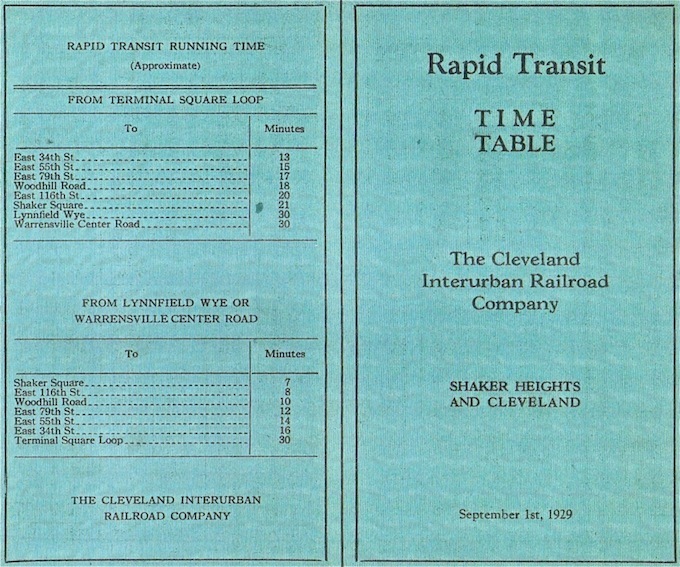Lynnfield Road Rapid Transit Station

Opened on April 11, 1920, the Lynnfield passenger station was constructed as the final stop along the South Moreland (now Van Aken) line of the Cleveland Interurban Railroad in Shaker Village. Besides a few homes located in the vicinity along Kinsman Road and Center Road, the area was completely undeveloped. The construction of this small station in the middle of nowhere was the culmination of years of planning, land acquisition, and construction headed by Oris Paxton and Mantis James Van Sweringen to build the Cleveland Interurban Railroad - a rapid transit system that laid at the heart of their plans for the development of Shaker Village.
From the time of their initial speculation and investment in the Shaker area in 1908, The Van Sweringen brothers understood the importance of efficient and timely transportation between Cleveland and their desired upper-class enclave. Elite suburbs connected to metropolitan areas by railway were gaining popularity with people of means throughout the United States as cities grew increasingly industrialized and congested. Cleveland Heights, as well as suburbs outside of Cincinnati, Chicago, and New York City, offered examples of these successful real estate ventures. Initially, the Van Sweringens planned to extend a streetcar line to their residential community. Refused by the operators of Cleveland's streetcar franchise, the Vans began acquiring land and the right of way to provide an electric train line to the city's downtown from their suburb.
During the timely process of preparing for the transit system, the Van Sweringen brothers negotiated an interim solution for Shaker Village's lack of public transportation with the Cleveland Railroad Co. and Cleveland Heights. The Cleveland Interurban Railroad would lay tracks for a streetcar to connect Shaker Village with Cleveland Heights, which had a line running into the City of Cleveland. Opened in 1913, this Shaker Lakes Line provided access to and from the Shaker area. A trip to the city, however, would still take over an hour.
By 1916, the brothers had acquired the right of way from Shaker Village to Cleveland and construction for the Cleveland Interurban Railroad began. Delayed by World War I, the transit system would not be completed for six years. Upon its opening, transportation time from the suburb to the urban center was cut by more than half. From Moreland Circle, later known as Shaker Square, the estimated travel time to the downtown was 20 minutes. From the Lynnfield Station, the trip would take a half hour. The impact of the electric train on Shaker Village was profound and immediate. Between 1919 and 1929, the population of Shaker Heights grew from 1,700 to 15,500, property value increased from less than a million dollars to over $80 million, and nearly 3,000 new homes were constructed. The success of this rapid transit system in promoting the development of Shaker Heights would also spur the construction of Cleveland's most defining building, the Terminal Tower.
While the area surrounding the Lynnfield station would not see residential growth for well over a decade after its construction, the small passenger station at what is now 18900 Van Aken Boulevard reflects the foresight and planning of the Van Sweringen brothers in the development of one of America's most prominent and successful rail suburbs. The structure was designated a Shaker Heights Landmark on June 22, 1998.
Images










